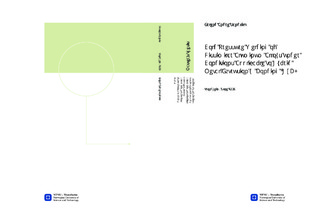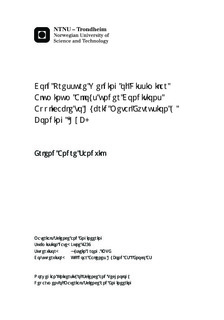| dc.contributor.advisor | Grong, Oystein | nb_NO |
| dc.contributor.advisor | Aakenes, Ulf Roar | nb_NO |
| dc.contributor.author | Sandvik, Erlend Andre | nb_NO |
| dc.date.accessioned | 2014-12-19T13:28:50Z | |
| dc.date.available | 2014-12-19T13:28:50Z | |
| dc.date.created | 2014-09-18 | nb_NO |
| dc.date.issued | 2014 | nb_NO |
| dc.identifier | 748310 | nb_NO |
| dc.identifier | ntnudaim:11602 | nb_NO |
| dc.identifier.uri | http://hdl.handle.net/11250/249595 | |
| dc.description.abstract | Traditional solid-state welding methods mainly focuses on joining of similar materials.But with the increased interest in multi-material constructions more research is neededon joining of dissimilar materials. In the present thesis dedicated cold pressure welding experiments with dissimilar aluminum alloys have been performed. The alloy combinations investigated were cold-deformed AA5183 and soft-annealed AA5183 (Series II) and cold-deformed AA5183 and commercial purity AA1050 (Series III). In both series metallic bonding is initiated when a critical value of the compressive plastic strain is reached. A small increase in the strain beyond this threshold leads to full metallic bonding. In Series II the soft-annealed AA5183 material rapidly work-hardens during upsetting until the pressure at the contact section becomes equal to that of the cold-deformed AA5183 material. At this point the two interfaces start to mate before the bonding process eventually commences. In Series III the soft commercial purity AA1050 material is unable to work-harden to any great extent. Instead, the cold-deformed AA5183 material starts to penetrate the soft AA1050 wire. This leads to build-up of an internal extrusion pressure approaching that of the cold-deformed AA5183 material. The local material flow pattern occurring at the interface will then determine the actual surface exposure at which full metallic bonding is achieved. | nb_NO |
| dc.language | eng | nb_NO |
| dc.publisher | Institutt for materialteknologi | nb_NO |
| dc.title | Cold Pressure Welding of Dissimilar Aluminum Alloys under Conditions Applicable to Hybrid Metal Extrusion & Bonding (HYB) | nb_NO |
| dc.type | Master thesis | nb_NO |
| dc.source.pagenumber | 61 | nb_NO |
| dc.contributor.department | Norges teknisk-naturvitenskapelige universitet, Fakultet for naturvitenskap og teknologi, Institutt for materialteknologi | nb_NO |

